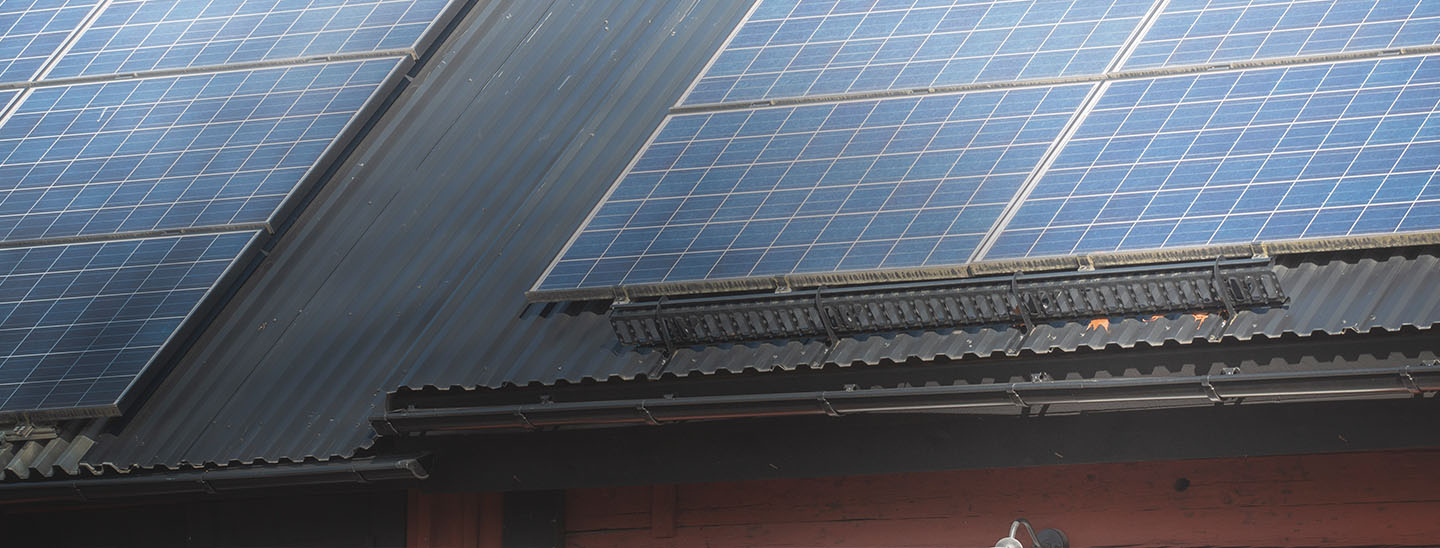Running an Environmentally Friendly Business
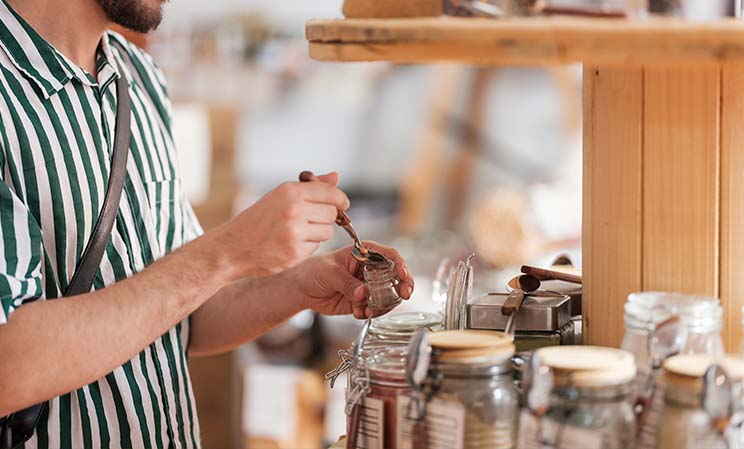
Waste minimization
The growing amount of waste produced in modern society has a huge impact on the environment. Many of the materials discarded in the waste can remain and affect the environment for hundreds or thousands of years, or even more. The presence of harmful waste in the natural environment can cause significant effects on plants, animals, and humans. The most effective way to reduce waste is to not create it in the first place. Reducing waste reduces your environmental impact, and it can also have a positive impact on your finances as well as a positive social impact by creating more jobs, for example for people in industries recycling goods.
By awareness-raising, you effectively encourage waste prevention, reuse, and recycling behavior within the organization.
Remember, only buy what you really need – what you did not buy will not end up as waste.
Set goals on waste management
- Make a policy and a strategy for waste management.
- Create a waste reduction strategy – analyze your waste production (where and how much), set goals and make a list of things to do.
- Conduct a waste management audit – be aware about your current situation so you can take the right actions. Take a walk around your premises, noting down the quantities and direct costs of any wastes that you can detect.
Reduce overall waste
- Purchase wisely, it is essential to reduce waste.
- Choose products and foods without packaging materials.
- Create a “less waste initiative” that encourages all employees and guests to be aware of their waste production.
- Manage your consumables (for example sheets and cleaning materials) in a way that extend their life time.
- Implement a recycling program – sort all generated waste for recycling, general recovery and energy recovery.
- Repair, reuse, and find new uses for things.
Reduce food waste
- Avoid serving food in the form of buffets. If you still choose to serve buffets, reduce the size of the plates so that guests take less food each serving.
- Include leftover groceries and ingredients in your cooking.
- Take care of leftover cooked food in different ways, for example offer your guests or staff to receive or buy leftovers and donate your leftover food to nearby actors such as schools, and care centers.
Reduce littering
- Reduce disposable items such as straws and cutlery. Offer refills of for example tea and coffee in thermos mugs.
- Put up more trash cans, and make sure they are wind and animal safe.
- Arrange clean-up events, encourage guests and staff to take part in the activity.
- Encourage your guests to keep a waste bag in their day-pack or vehicle so they can dispose any trash produced from activities, such as trekking, properly later.
Reduce production waste
- Develop a system for recycling the products of your own company. You can offer to take them back if the customer no longer wants them, and you can sell them second hand.
- Avoid unnecessary packaging.
- Choose durable, and smart packaging for your goods.
- Use materials that can be reused for displaying your goods.
- Encourage customers to bring their own carrier bags, jars, bottles, thermoses and packaging for the goods they will purchase.
Reduce disposable items
- Avoid disposable materials in all parts of your business such as wrapped slippers and bathrobes; disposable cutlery, plates, glasses, mugs and straws; disposable packaging for skin, hair, beauty products, toothpaste, toothbrushes; coasters, protection, decoration, other packaging; paper napkins and towels.
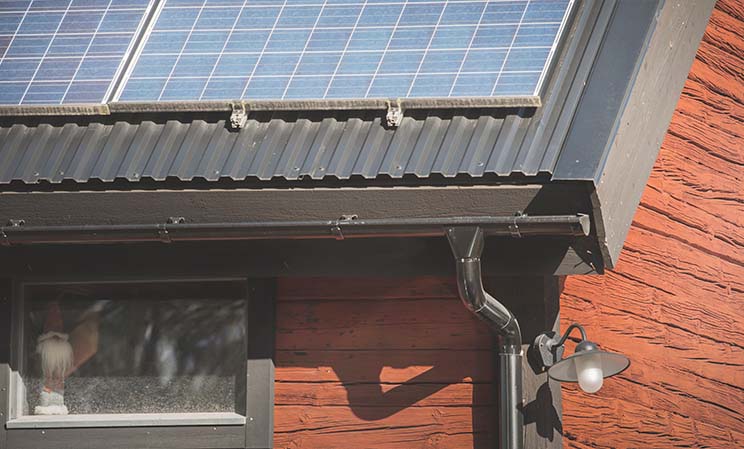
Sustainable energy use
All energy use affects the environment via greenhouse gas emissions and other air pollution. By using renewable energy however, and at the same time reducing our energy use, so that the amount of renewable energy resources is enough for everyone, we can reach a more sustainable way of life. Clean energy for electricity, heating, and transport is necessary to reduce the climate impact of your company. Remember that the best energy is “negawatt” – it represents a watt of energy that you have not used through energy conservation or the use of energy-efficient products.
Set goals on energy use
Energy savings in the tourism industry consist of several parts, including heating, cooling in the summer, indoor and outdoor lighting, ventilation, kitchen equipment, terrace heating, and more.
- Make a policy and a strategy for energy management. What does energy efficiency and sustainable energy mean for your company?
- Create an energy reduction strategy – analyze usage (where and how much), set goals and make a list of things to do. Make a sustainable procurement plan – choose energy efficient solutions and products.
- Conduct an energy management audit – be aware of your current situation so you can take the right actions. Take a walk around your premises (during open and closed hours), note down the standby items, unnecessary lamps, heating systems covered by furniture and so on. Energy consumption monitoring will help you – investigate the possibility of monitoring the energy consumption of specific equipment items.
- Make a commitment to green energy – choose green electricity from your electricity supplier. You can also produce your own energy by setting up solar cells.
- Develop an operation and maintenance guide that describes which technical systems you have in your buildings, how they intend to work, and how they should be maintained. The guide should cover plumbing and control systems, such as heating, cooling, ventilation, sanitation, control, regulations and monitoring, LPG, compressed air, and sprinklers. The operation and maintenance guide does not have to be so advanced at first, a few lines about each system is better than nothing at all.
- Label switches so they are not accidentally turned on.
General energy saving tips
- Make sure that lighting, heating and other appliances only operate when they are needed.
- turn-off exterior lighting during daylight hours
- use timers or motion detectors
- install energy meters to keep track
- avoid leaving equipment on stand by
- avoid leaving portable electronics such as laptops or mobiles on charge unnecessarily
- Regularly maintain and adjust of your appliances and systems. Schedule cleaning of radiators and valves.
- Educate all staff about energy efficiency, this is a simple and cost effective measure.
- Teach the cleaning staff how to air properly and efficiently.
- Stop air leakage. Inspect, caulk and weather-strip windows and doors to avoid unnecessary energy waste.
- Use solar shading, which is a form of solar control that can be used to optimise the amount of solar heat gain and visible light that is admitted into a building.
Save energy for heating
- Save money on heating and cooling bills by simply resetting your thermostat when it is low season, or when different rooms or parts of the facility are not used. You can also lower the temperature during night time. You can do this automatically without sacrificing comfort by installing an automatic setback or programmable thermostat.
- Bleeding your radiators can help you save energy. One of the main problems with radiators is that air sometimes becomes trapped inside them. When that happens, a bubble of air impedes the flow of hot water and stops the hot water from circulating. The only way to remove that air bubble is to bleed the radiator and restore the water flow inside.
- Keep doors and windows shut when the heating or cooling system is on.
Save energy in hotel rooms
- Remove refrigerators or “minibars” in the majority of the hotel rooms, instead offer guests to buy cold drinks in the lobby and offer the rooms with refrigerator on request.
- Unwanted draughts can cause rooms feel chilly and make your guests feel comfortable.
- Encourage guests and staff to inform the reception or maintenance if something is broken in the heating/cooling system, or if air is leaking through doors and windows.
- Develop simple and easy-to-understand information about how the heating and cooling system works so the guest can adjust it instead of opening windows. Inform how the guest can take sustainable actions by handling the heating/cooling correctly.
- Modify the limits of room temperature control (lower limit 18 degrees, upper limit 23 degrees)
- Install use timers or motion detectors for lighting.
- Switch to energy-efficient lighting.
- Turn the television off when leaving the room (avoid sleep/stand by mode). Use a timer on the television so that it switches off automatically after a certain time. Remove the television in a part of the hotel rooms, and offer the rooms with television on request.
Save energy in the kitchen
- Turn off all appliances that are not in use
- Set the right temperature in refrigerators and fridges, and defrost regularly.
- Keep the door to the fridge and refrigerator closed as much as possible and do not open them unnecessarily.
- Do not store hot food in cooling chambers.
- Only run the dishwasher when it is fully loaded, choose energy saving programs.
- Turn off stoves and oven ten minutes or more before finishing cooking to use residual heat. Cook several dishes at once and cook food in smaller pieces.
- If you need to check on a dish, use the oven window. Every time the oven door is opened, the temperature inside is reduced by as much as 25 degrees, forcing it to use more energy to get back to the proper cooking temperature.
- Switch off beverage dispensers (machines that cool drinks) if they are not used. Install timers.
- Be smart about heating. Energy costs of heating water in an electric kettle is much more efficient than in a microwave or on the stove.
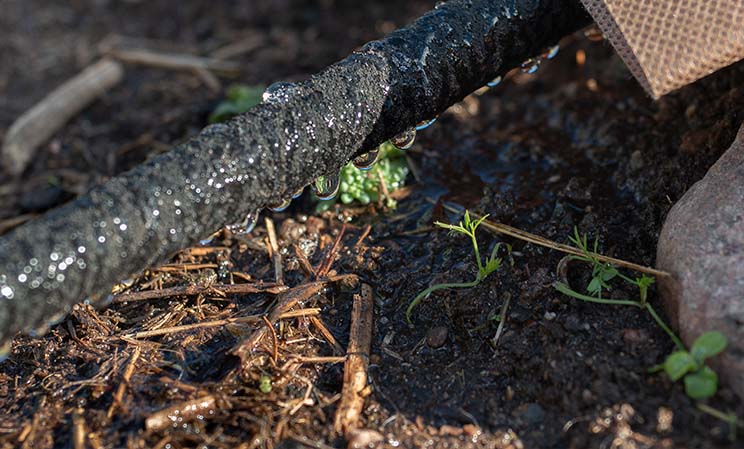
Sustainable water use
Clean freshwater is a natural resource that is essential to life and that we should handle with care. A drier climate has made groundwater levels in some parts of the southern Baltic Sea region very low and there is occasional water scarcity. Water scarcity prevails when the freshwater resources are insufficient to meet the standard water demand. If we are to live more sustainably, it is important not to waste water. By keeping track of your water use and saving water, you contribute to a more sustainable community while also reducing your expenses, for both water and energy.
Inform, involve and encourage your guests and staff to make their behaviour more sustainable. We are often unaware about when we waste water – for example waiting for the water in the shower to become warmer.
Set goals on water use
- Make a policy and a strategy for water management.
- Create an water reduction strategy – analyse usage (where and how much), set goals and make a list of things to do.
- Monitoring your water usage is the first step to savings. Using a smart meter is the best way to go about this. Knowing how much you use and where can help you to identify areas of potential savings, quickly address leaks. Monitor your bills closely on an ongoing basis to identify changes in patterns of water consumption.
- Conduct a water management audit – pay attention to your indoor water usage. Check routinely for leaks such as leaking faucets, toilets, and appliances. Take a walk around your premises to check all taps, toilets and so on. Actions to stop leaky faucets and toilets saves both water and money.
- Educate employees on good water using habits, share water-saving ideas. Every member of your team needs to operate with water conscientiousness. Offer training, guides, and guidance on what needs to happen water-wise within the business to meet your water-saving goals and explain why.
- Cooperate to report broken pipes, leaky hydrants and errant sprinklers to property owners or your local water provider.
General water saving tips
- Stop the dripping. Water may be wasted in many places around the facility, from leaking toilets to dripping faucets. Identify costly water leaks that should be repaired, check your water meter for example to detect leaks. Calculate your water waste. Find out just how much water you waste when you let a dripping faucet drip – investigate worn toilet flappers, dripping faucets, and leaking shower heads. A dripping tap can waste 800 litres of water in a month and a leaking toilet up to 400 litres of water each day.
- Replacing outdated or inefficient fixtures save water and money on utility bills in the long run. Install water-efficient taps with an aerator or flow restrictor to use less water. Install lever or mixer taps, these save water by quickly reaching a desired temperature.
- Promote the drinking of potable tap water instead of bottled water among employees, guests and customers.
- Wash company vehicles when needed rather than on a schedule. Use a commercial car wash that recycles water.
Save water in hotel rooms
- Allow guests to opt for a linen and towel reuse programme, allowing them to choose to not have linen and towels changed daily.
- Install water-efficient shower heads, which can use up to 40% less water. Set the shower flow to less than than 10 litres per minute.
- Install low-flow toilets, which use roughly two to four times less water than older models. Install dual flush toilets.
- Your taps should have a maximum flow of six litres per minute.
- Cut water usage in your laundry operation with a low-water washing system.
- Encourage guest to not spend more time in the bathroom than needed. Turn off the water while brushing the teeth – place a sign above basins suggesting that guests do not leave the tap running while shaving or brushing teeth. Encourage the guest to keep the showers brief, and to take a shower instead of baths. A full bath holds more than four times as much water than is needed to adequately bathe.
- Make sure that the amount of cleaning in the room is optimal and carried out using green cleaning products.
Save outdoor water
- Take note of leaky faucets outdoors, check faucets, pipes, and hoses.
- Put any decorative fountains and similar on timers and keep them on only during work hours.
- For any irrigation system, hire a qualified professional to install it and keep it working properly and efficiently. Make sure your irrigation system is watering only the areas intended, and that the water is not wasted on walkways, streets and so on.
- Leave lawn clippings on your grass since it cools the ground and retains moisture.
- Use porous material for walkways and patios to prevent wasteful runoff and keep water in your yard.
- Use cultural plants from your region and group them with plats that have the same watering needs to avoid over watering some while under watering others.
- Use a layer of organic mulch on the surface of your planting beds to minimize weed growth that competes for water. Spreading a layer of organic mulch around plants helps them retain moisture, saving water, time and money.
- Collect water from your roof by installing gutters and downspouts. Direct the runoff to plants and trees.
- Use a pool cover to help keep your pool clean, reduce chemical use and prevent water loss through evaporation.
- Do not overfill the pool. Lower water levels will reduce water loss due to splashing.
Save water in the kitchen
- Set taps to have a maximum flow of 10 litres per minute.
- Establish water-saving guidelines for using kitchen equipment; use the dishwasher, and start only when it is full, use the eco program; do not wash dishes in running water; scrape dishes rather than rinsing them before washing; resoak pots, pans and utensils in basins of water; boil only the amount of water for tea/coffee that is needed.
- Wash fruit and vegetables in a sink.
- Choose hotel kitchen equipment that uses minimal water. Install water-efficient dishwashers to use 50% less water than average models.
- Keep equipment maintained and drains clean.
- Stop selling bottled water.
- Serve water only upon request and ask before refilling. A 2.5 dl glass of water needs an additional 5 dl of water for cleaning.
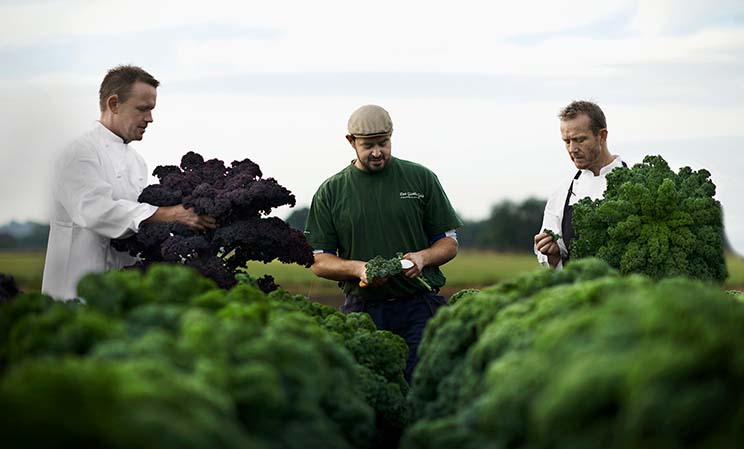
Sustainable procurement and purchasing – general
Your purchases affect your entire business, both from a health perspective and when it comes to the environment. The increased interest in ethics, ecology, and social responsibility requires that companies work on sustainability issues and have a strategy to reduce their environmental impact. By choosing green procurement with organic products, you help to reduce the spread of synthetically produced chemical pesticides in nature. Think before you act – things you have not procured, can not be used or offered to your customers.
Set goals for green procurements
- Make a policy and a strategy for sustainable procurements. Here are some other terms that are similar:
-
- Green purchasing
- Green procurement
- Recycled/Reusable
- Eco-efficient product/sustainable product
- Efficient procurement
- Environmental procurement
- Clean procurement
- Responsible procurement
- Make a code of conduct for procurement and decide who you want to cooperate with. Perhaps you might want your partners to sign the code of conduct that you developed. That means that you define that you expect vendors and their sub-contractors to operate lawfully and conduct their activities in a socially and environmentally responsible manner by, at a minimum, meeting the expectations set forth in your code of conduct.
- Conduct a procurement management audit – consider how your purchasing decisions will have an impact on the planet and how your decisions also set an example for others.
- Make a list of all the things you usually buy, check what you can remove and what you can improve. Consider how many of your purchases that are due to old habits, instead of a real need.
- Plan your purchases and buy only what you need keeping track of which sustainability labels are available, decide what is important to you and make priorities.
Cooperate with trusted procurers
- Avoid products from suppliers using pesticides or genetically modified foods.
- Choose suppliers who can describe and verify the quality of what they sell.
Choose the right type of products
- Buy local raw materials to support local producers.
- Buy local and organic raw materials to promote biodiversity.
- Avoid products that require large amounts of natural resources and long transports.
- Prioritize recycling and second-hand
- Prioritize materials that can be reused in the first place and recycled in the second place.
- Choose sustainable produced natural materials (such as wood or linen).
- Always choose products of good quality that last a long time and can be renovated.
- Choose energy- and water-efficient equipment.
- Have knowledge about the materials, products and raw materials you need.
- Use renewable raw materials and degradable ingredients.
- Focus on creating the best possible starting point for manufacturing your products.
- Buy products where the entire production takes place with consideration to the environment.
- Select materials and products that can be repaired and reused.

Sustainable procurement and purchasing – meat and fish
We need biodiversity on land and in the oceans and at the same time be able to use nature’s resources in a sustainable way. We must, therefore, together, take responsibility and make improvements so that the entire food chain from land or sea to meals can be sustainable. In your business, you can choose meat that comes from animals that contribute positively to biodiversity. You can choose fish wisely and help ensure that the oceans are not depleted so that the fish have time to recover and reproduce and that the oceans’ ecosystems stay in balance.
Set goals on meat and fish procurements
- Make a policy and a strategy for sustainable procurements for meat and fish.
- Choose suppliers that help you reduce transports. Demand group transport, besides reducing costs, grouping your products for transportation will in turn reduce the impact on the environment, compared to individual haulage for each item.
Choose the right type of meat and fish
- Learn about sustainability certifications for meat and fish.
- Choose certified organic domestic meat.
- Choose certified domestic natural pasture meat.
- Choose wild-caught fish that is MSC-labelled and approved according to the WWF consumer guide.
- Choose farmed MSC- labelled fish that is approved according to the WWF consumer guide.
- Remember that game meat is a limited resource, use local meat that has been tested according to national food legislation.
- Find out where and how production takes place, avoid long transports.
- Define what you expect from the supplier and communicate it.
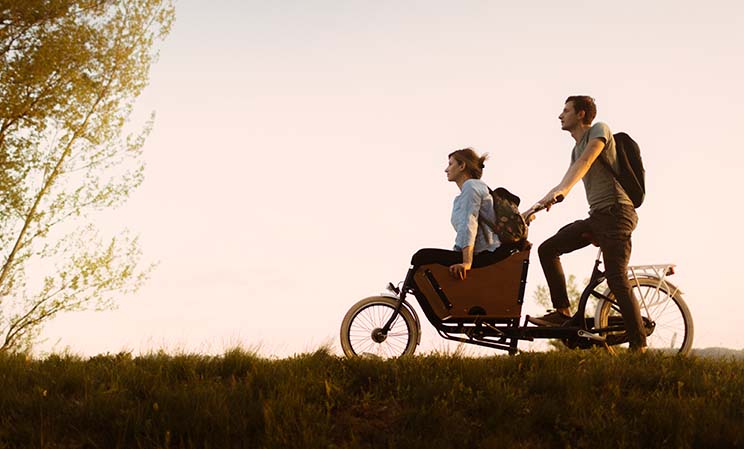
Sustainable transports
Our travel produces large emissions of carbon dioxide and other pollutants that affect our health and contribute to changing the climate on earth. Traffic affects nature through emissions of acidifying, fertilizing, and ozone-forming substances. Traffic emissions of pollutants also harm human health. Particles in the outdoor air contribute to cardiovascular diseases as well as diseases that impair lung function and can affect the normal development of the lungs. The incomplete combustion of fossil fuels forms particles and hydrocarbons. By thinking about how we travel and transport things, we have great opportunities to reduce emissions. In wellbeing tourism, sustainable travel to and between destinations is an important part.
Set goals on transports
- Make a policy and a strategy for sustainable transport. Describe what it means for you and which transports that will be included.
- Conduct a transport and CO2(g) management audit – include your own vehicles and produced services, and perhaps even the transports of your guests. Make improvements by changing the old solutions to bicycles, and electric or biogas cars.
Sustainable travel for guests
- Help your guests plan their sustainable journey to your facility.
- Offer transport from train and bus stations or collaborate with others for smooth transfer.
- Promote the concept of carpooling and support your guests finding good solutions.
- Provide rental or loan bicycles and secure bicycle parking for those who bring their own bikes.
- Find out how your guests travel to you – offer and inform about other possibilities providing charging options for electric cars and electric bicycles.
Sustainable supply chains
- Choose suppliers that help you reduce transports. Demand group transport, besides reducing costs, grouping your products for transportation will in turn reduce the impact on the environment, compared to individual haulage for each item. Choose slower deliveries. Coordinate your distribution of goods and products with others.
- Create a plan for how you can shorten your supply chains to a minimum.
- Buy locally.






